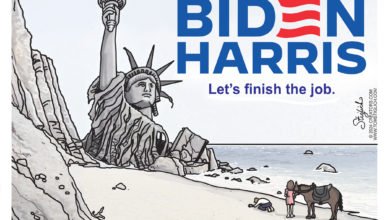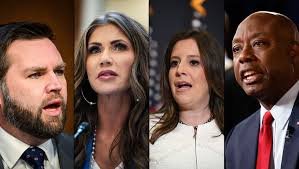The economy tanked last year. What will happen this year?
Recently released data from the US Department of Commerce indicates that GDP declined by 3.5% last year. That is the worst annual economic performance since 1946. All of the decline, however, was in March and April. Because the economy almost completely shut down in those months, the robust V-shaped recovery that followed was not enough to avoid the negative number for all of 2020.
In January and February the economy was very strong. In fact, based on those two months, it looked like GDP growth would be the best in decades perhaps approaching a 4% rate. This annual rate has not been seen since the year 2000.
Then the virus hit. The impact of the economic shutdown was so great in March, that the entire first quarter saw a 5% decline in GDP. The economy continued the shutdown in April. Even though May and June saw a rapid recovery, the April decline was so great that GDP declined at an annual rate of 31% for the second quarter.
Mostly because Congress passed a massive nearly $3 trillion stimulus package and because much of the economy re-opened, third-quarter GDP grew at a 33% annual rate. The V-shaped recovery looked very strong. But in early Fall the virus flared up and many states again shut their economy down. Politics kept Congress from passing any more stimulus.
The fourth quarter saw GDP growth slow to a 4% rate. Had the states kept their economy open or had Congress passed more stimulus, GDP growth would have been much stronger in the fourth quarter and growth less negative for the entire year.
Another nearly $1 trillion stimulus was passed by Congress in late December. It had no impact on 2020. Much of the money has not been spent as yet. Now in 2021, what can we expect?
Of course, the biggest variable is what happens to the virus. Because the prior administration instituted Operation Warp Speed which reduced the time it takes to develop, manufacture and administer vaccines, the Trump vaccines now have more than 50 million doses made and more than 26 million doses administered.
Most experts are predicting that by early summer, enough vaccines will have been given to Americans, that the virus could be under control. If that happens, the second half of this year should see very strong economic growth. That assumes that the current administration focuses policy decisions on growth and not “curing perceived social injustices.”
It is also likely that another stimulus package will be passed. Like the two prior packages, this is both a good thing and a bad thing. On the good side, the next package will provide relief to those that have been economically damaged. It will also provide funds for states and cities to help with their recovery.
As with the prior stimulus packages injecting hundreds of billions or perhaps trillions of dollars into the economy will increase economic activity. That will provide a needed jump for the economy. Assuming the states that have completely or mostly shut down, do reopen soon, the first-quarter growth will likely be in the 5% range.
As the effects of the virus are minimized, economic growth will increase. That means the US could see about 7% annual growth for 2021. That would show that the V-shaped recovery that started in May 2020 will continue for 2021.
The unemployment rate could drop to under 5%.
There is a longer-term problem that must be considered. Prior to the virus, the public debt, which is the total of all annual budget deficits, was $23 trillion. In fiscal 2020, the $3 trillion deficit brought the public debt to $26 trillion. Then another nearly $1 trillion stimulus package was passed, taking the total debt to $27 trillion.
If the current Biden proposal of $1.9 trillion for the next stimulus is passed, the public debt will be $29 trillion. That a problem because it is nearly 50% larger than annual GDP. Most economists say if the debt is less than 1 year’s GDP it is tolerable. Fifty percent more than annual GDP creates problems.
Specifically, the problems are that the interest expense on that debt is about $400 billion annually, which is 10% of total federal government spending. That’s money that can’t be used to fund needed programs.
The other problem is that with the government pulling trillions from capital markets, business could have trouble raising new capital. That will stagnate the economy, significantly raise interest rates and put inflationary pressure on prices.
It gets worse if the Biden Administration raises taxes on corporations, and raises taxes on the highest income earners. Both of those actions will reduce the amount of new capital created, further contributing to a capital shortage.
This year should see strong growth, assuming the virus can be contained and the economy fully reopened. Beyond this year, annual deficits, the public debt and increased taxes could slow growth, similar to the slow growth recorded from 2007 to 2016.
Let’s hope economic policy focuses on growth.




